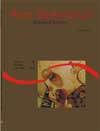<b>Study of the floral biology and reproductive mechanisms of <em>Alfavacão</em> (<em>Ocimum officinalis</em> L.) aiming at genetic improvement</b> - DOI: 10.4025/actascibiolsci.v26i3.1598
Abstract
Some of the plants from Ocimum genus in Lamiaceae family are source of essential oils used in pharmacy, perfume and cosmetics industry. The knowledge of mate systems is extremely important because it allows to define selection strategies based on intra and interpopulation crossbreeding. The aim of this work was to study floral biology and reproductive mechanisms of alfavacão aiming at genetic improvement. The floral activity included three floral stages: first, pre-anthesis, when the pollination happened; second, anthesis, when the asynchronous opening of stamens happened; and third, pos-anthesis, when there was the fecundation of the ova. The anthesis process is intimately related to climatic conditions. The accesses of O. officinalis from Banco de Germoplasma de Plantas Medicinais da UESB (Medicinal Plants Germplasm Bank from UESB), in spite of reproducing, predominantly, by self crossing, may present outcrossing reproduction. This makes evident the wide reproductive versatility of this species, accentuating the genetic variability, which is essential for evolutionDownloads
Download data is not yet available.
Published
2008-04-01
How to Cite
Almeida, O. da S., Silva, A. H. B. da, Silva, A. B., Silva, A. B. da, & Amaral, C. L. F. (2008). <b>Study of the floral biology and reproductive mechanisms of <em>Alfavacão</em> (<em>Ocimum officinalis</em> L.) aiming at genetic improvement</b> - DOI: 10.4025/actascibiolsci.v26i3.1598. Acta Scientiarum. Biological Sciences, 26(3), 343-348. https://doi.org/10.4025/actascibiolsci.v26i3.1598
Issue
Section
Biology Sciences
DECLARATION OF ORIGINALITY AND COPYRIGHTS
I Declare that current article is original and has not been submitted for publication, in part or in whole, to any other national or international journal.
The copyrights belong exclusively to the authors. Published content is licensed under Creative Commons Attribution 4.0 (CC BY 4.0) guidelines, which allows sharing (copy and distribution of the material in any medium or format) and adaptation (remix, transform, and build upon the material) for any purpose, even commercially, under the terms of attribution.
Read this link for further information on how to use CC BY 4.0 properly.
0.6
2019CiteScore
31st percentile
Powered by 

0.6
2019CiteScore
31st percentile
Powered by 











1.png)




3.png)













